Section 5
Typeforms
5.1 Fundamentals
5.2 Distinctive Typefaces and Font Attributes
5.3 When Print Font Attributes May Be Ignored
5.5 Color, Highlighting, and Other Print Fonts
5.6 Font Emphasis for One or More Paragraphs
5.7 Emphasized Letters within a Word
5.8 Multiple Emphasis in Exercise Material
5.10 Samples
5.1 Fundamentals
A variety of visual techniques are used to attract a reader's attention, including the use of font attributes. Teachers may reference these; consequently it is becoming more important to follow print for educational content.
UEB defines symbols for italics, bold, underlining, and script. There are also five transcriber-defined typeform indicators to be used for other print font attributes. Each typeform indicator requires the addition of a symbol, word, or passage indicator. Passage indicators require the use of a typeform terminator. (See Formats, Appendix G, for a list of these symbols and UEB, §9, Typeforms.)
We use braille typeform indicators for two main reasons:
a. To show the braille reader a situation in which emphasis is used in print. Foreign words are sometimes emphasized for this reason, as well as paragraph headings.
b. To give the braille reader an accurate rendition of the print text in situations where the type of print emphasis (e.g., color, italics, bold, underlining, script, etc.) might be mentioned by the print reader. For example, a teacher might mention a blue box or a word in bold.
5.2 Distinctive Typefaces and Font Attributes
a. If the use of small capitals is determined to be a required print font, use a transcriber-defined typeform indicator to indicate the small capitals (Example: horse). If the small capitals do not need to be distinguished in some way, the word(s) may be fully capitalized in braille. Note: Use a capital indicator before the first letter of a word printed in small capitals when the initial letter of the word is shown in larger font (Example: Horse).
b. Roman numerals and similar material in small capitals should be transcribed using an initial capital or the capitalized word indicator (fully capitalized).
c. Uppercase is not a font attribute. Follow print for capitalization.
5.3 When Print Font Attributes May Be Ignored
Example 5-1: Italicized Single Letters
,! spell+ h9t 8i 2f ;e1 except af ;c0
isn't v help;l1 2c "! >e _m excep;ns4
Example 5-2: Prefix and Suffix with Font Attributes

dis-
ible
-ance
Example 5-3: Part-of-Speech Abbreviation
a3use "<uh-,,kuz"> ;v4 blame
Example 5-4: Ignore Font Attribute for Title

⠀⠀⠀⠀⠀⠀⠀⠀⠀⠀⠀⠀⠀⠀⠀⠀⠀⠀⠀⠀⠀⠀⠀⠀⠀⠀⠀⠀⠀⠀⠀⠀⠀⠀⠀⠀⠀⠀⠀⠀
⠀⠀⠀⠀⠀⠀⠀⠀⠀⠀⠀⠀⠀,eyes & ,te>s
⠀⠀⠀⠀⠀⠀⠀⠀⠀⠀⠀⠀⠀⠀⠀⠀⠀⠀⠀⠀⠀⠀⠀⠀⠀⠀⠀⠀⠀⠀⠀⠀⠀⠀⠀⠀⠀⠀⠀⠀
⠀⠀⠀⠀⠀⠀⠀⠀⠀⠀⠀⠀,,&rew ,,m>vell
⠀⠀⠀⠀⠀⠀⠀⠀⠀⠀⠀⠀⠀⠀⠀⠀⠀⠀⠀⠀⠀⠀⠀⠀⠀⠀⠀⠀⠀⠀⠀⠀⠀⠀⠀⠀⠀⠀⠀⠀
,h[ wisely ,nature did decree1
Example 5-5: Bold Ignored (Print Only)
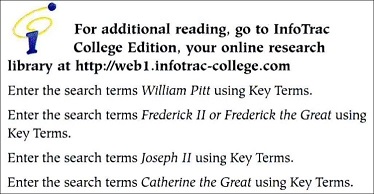
Example 5-6: Italics Ignored (Print Only)
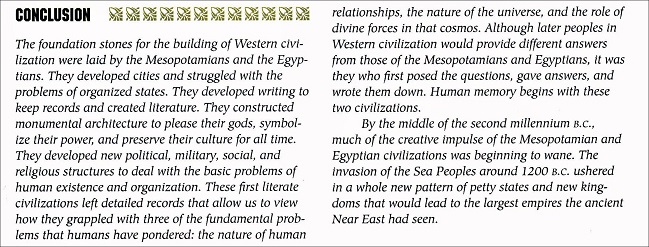
Example 5-7: Italics Ignored for Spelling Words

⠀⠀⠀⠀⠀⠀⠀⠀⠀⠀⠀⠀⠀⠀⠀⠀⠀⠀⠀⠀⠀⠀⠀⠀⠀⠀⠀⠀⠀⠀⠀⠀⠀⠀⠀⠀⠀⠀⠀⠀
⠀⠀⠀⠀,,spell+ ,,^ws
#a4 fr⠀friend
#b4 v⠀very
#c4 p⠀people
#d4 busy
Example 5-8: Font Attributes Ignored in Plays
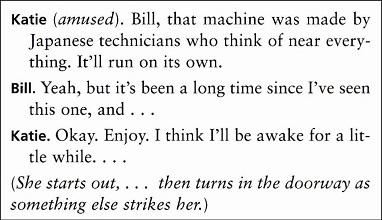
^1,katie "<amus$">4 ,bill1 t ma*9e 0
⠀⠀made by ,japanese te*nicians :o ?9k (
⠀⠀ne> "ey?+4 ,x'll run on xs [n4
^1,bill4 ,y1h1 b x's be5 a l;g "t 444
^1,katie4 ,okay4444
⠀⠀⠀⠀⠀⠀"<,%e />ts \1444 !n turns 9 !
⠀⠀⠀⠀⠀⠀doorway z "s?+ else /rikes h]4">
Example 5-9: Font Attribute Ignored for Bold Numbers

⠀⠀⠀⠀⠀⠀⠀⠀⠀⠀⠀⠀⠀⠀⠀⠀⠀⠀⠀⠀⠀⠀⠀⠀⠀⠀⠀⠀⠀⠀⠀⠀⠀⠀⠀⠀⠀⠀⠀⠀
⠀⠀⠀⠀,:at ,y ,w ,4cov]
#a4 ,did yr spid] w1ve a web8
#b4 ,:at "t ( "d did yr spid] />t to
⠀⠀w1ve xs web8
#c4 ,did yr spid] build j "o web8
Example 5-10: Italics Retained for Distinctive Entry Words

⠀⠀⠀⠀⠀⠀⠀⠀⠀⠀⠀⠀⠀⠀⠀⠀⠀⠀;,g
,gift tax ,a tax on a gift by a liv+
⠀⠀p]son4 ;p4 #dea
.1,glasno/ ,! ,soviet policy ( op5;s "u
⠀⠀: tol].e ( 4s5t & fre$om ( expres.n
⠀⠀9cr1s$4 ;p4 #fdf
Example 5-11: Retain Font Attribute for Title

⠀⠀⠀⠀⠀⠀⠀⠀⠀⠀⠀⠀⠀⠀⠀⠀⠀⠀⠀⠀⠀⠀⠀⠀⠀⠀⠀⠀⠀⠀⠀⠀⠀⠀⠀⠀⠀⠀⠀⠀
⠀⠀⠀⠀⠀⠀⠀⠀⠀⠀⠀⠀⠀,eyes & ,te>s
⠀⠀⠀⠀⠀,f .7,&rew ,m>vell ,revisit$.'
⠀⠀⠀⠀⠀⠀⠀⠀⠀⠀⠀⠀⠀⠀⠀⠀⠀⠀⠀⠀⠀⠀⠀⠀⠀⠀⠀⠀⠀⠀⠀⠀⠀⠀⠀⠀⠀⠀⠀⠀
⠀⠀⠀⠀⠀⠀⠀⠀⠀⠀⠀⠀by ,?omas ,:eel]
⠀⠀⠀⠀⠀⠀⠀⠀⠀⠀⠀⠀⠀⠀⠀⠀⠀⠀⠀⠀⠀⠀⠀⠀⠀⠀⠀⠀⠀⠀⠀⠀⠀⠀⠀⠀⠀⠀⠀⠀
,h[ wisely ,nature did decree1
Example 5-12: Retain Font Attribute for Preposition

⠀⠀⠀⠀⠀⠀⠀⠀⠀⠀⠀⠀⠀⠀⠀⠀⠀⠀⠀⠀⠀⠀⠀⠀⠀⠀⠀⠀⠀⠀⠀⠀⠀⠀⠀⠀⠀⠀⠀⠀
⠀⠀⠀⠀⠀⠀⠀⠀⠀⠀,:at ,makes ,a ,w9n]
⠀⠀⠀⠀⠀⠀⠀⠀⠀⠀⠀⠀.1f ,s1biscuit3
⠀⠀⠀⠀⠀⠀⠀⠀⠀⠀,an ,am]ican ,leg5d
⠀⠀⠀⠀⠀⠀⠀⠀⠀⠀⠀⠀⠀⠀⠀⠀⠀⠀⠀⠀⠀⠀⠀⠀⠀⠀⠀⠀⠀⠀⠀⠀⠀⠀⠀⠀⠀⠀⠀⠀
⠀⠀⠀⠀⠀,biography by ,laura ,hill5br&
⠀⠀⠀⠀⠀⠀⠀⠀⠀⠀⠀⠀⠀⠀⠀⠀⠀⠀⠀⠀⠀⠀⠀⠀⠀⠀⠀⠀⠀⠀⠀⠀⠀⠀⠀⠀⠀⠀⠀⠀
,quiet trepida;n settl$ ov] 444
Example 5-13: Glossary Words
⠀⠀,sociologi/s ref] to ? tr5d z !
^7fem9iza;n ( pov]ty^' "<.7,! ,/ate (
,am]ica's ,*n1.' #aiih">4
Symbols used in this volume:
.=`#7 Double underline passage indicator
.=`#' Double underline terminator
.=^#1 Yellow highlighted word indicator
Example 5-14: Use of Transcriber-Defined Indicators

⠀⠀⠀⠀⠀⠀`.<,symbols us$ 2l3
⠀⠀⠀⠀⠀⠀⠀⠀⠀⠀⠀⠀⠀⠀⠀⠀⠀⠀⠀⠀⠀⠀⠀⠀⠀⠀⠀⠀⠀⠀⠀⠀⠀⠀⠀⠀⠀⠀⠀⠀
.=`#7 ,d|ble "ul9e passage 9dicator
.=`#' ,d|ble "ul9e t]m9ator
.=^#1 ,yell{ hi<li<t$ ^w 9dicator`.>
⠀⠀⠀⠀⠀⠀⠀⠀⠀⠀⠀⠀⠀⠀⠀⠀⠀⠀⠀⠀⠀⠀⠀⠀⠀⠀⠀⠀⠀⠀⠀⠀⠀⠀⠀⠀⠀⠀⠀⠀
#a4 ,use a plural v]b ) subjects jo9$ by
⠀⠀⠀⠀.1&4
⠀⠀,my s*ool's `#7or*e/ra .1& b&`#'
⠀⠀⠀⠀^#1h di6]5t 9/ru;ts4
a. Follow print for the emphasis used.
b. Use contracted braille for all words with emphasized letters. If the emphasis applies to the initial letter of a contraction, the contraction can still be used.
c. Use the typeform word indicator when the emphasis applies to more than one symbol. If the emphasis occurs within a word and a return to regular type is required, use a terminator to show the return to regular print font.
Example 5-15: Emphasized Letters within a Word

_2,%e _2sells _2s1%ells by ! _2s1%ore4
_1,%_'e sells sea_1%_'ells by !
⠀⠀sea_1%_'ore4
Each sentence is shown first without emphasis and then repeated with all indicators used.
Example 5-16: Repeated Sentences
⠀⠀⠀⠀⠀⠀`.<,ea* s5t;e is %{n f/ )\t
⠀⠀⠀⠀emphasis & !n rep1t$ ) all 9dicators
⠀⠀⠀⠀us$4`.>
#a4 ,x is sn[+ \tside4 ,! /reet is wet4
⠀⠀#a4 ,x `#1is _1sn[+ \tside4 ,! /reet
⠀⠀⠀⠀^#1is wet4
#b4 ,i h b"\ new boots4 ,!y h woolly
⠀⠀⠀⠀l9+s4
⠀⠀#b4 ,i `#1h _1b"\ new boots4 ,!y ^#1h
⠀⠀⠀⠀woolly l9+s4
In the sentences below, some words are enclosed in a rectangle or an oval. When multiple words are within one shape, a passage indicator rather than a word indicator is used. Symbols used:
.=`#7 Words enclosed in a rectangle
.=`#' Rectangle terminator
.=^#1 Word enclosed in an oval
Example 5-17: Use of Typeform Indicators to Show Words in Shapes
⠀⠀⠀⠀5clos$ 9 a rectangle or an oval4 ,:5
⠀⠀⠀⠀multiple ^ws >e )9 "o %ape1 a
⠀⠀⠀⠀passage 9dicator r ?an a ^w 9dicator
⠀⠀⠀⠀is us$4 ,symbols us$3
⠀⠀⠀⠀⠀⠀⠀⠀⠀⠀⠀⠀⠀⠀⠀⠀⠀⠀⠀⠀⠀⠀⠀⠀⠀⠀⠀⠀⠀⠀⠀⠀⠀⠀⠀⠀⠀⠀⠀⠀
.=`#7 ,^ws 5clos$ 9 a rectangle
.=`#' ,rectangle t}m9ator
.=^#1 ,^w 5clos$ 9 an oval`.>
⠀⠀⠀⠀⠀⠀⠀⠀⠀⠀⠀⠀⠀⠀⠀⠀⠀⠀⠀⠀⠀⠀⠀⠀⠀⠀⠀⠀⠀⠀⠀⠀⠀⠀⠀⠀⠀⠀⠀⠀
,bo/on c 2 `#7v hot`#' dur+ ! ^#1summ]
mon?s4
Sample 5-2: Ignoring Font Attribute in Quoted Matter, page 5-15
Sample 5-3: Use of Color as Emphasis, page 5-16

1 ⠀⠀⠀⠀⠀⠀`.<,symbols us$3
2 ⠀⠀⠀⠀⠀⠀⠀⠀⠀⠀⠀⠀⠀⠀⠀⠀⠀⠀⠀⠀⠀⠀⠀⠀⠀⠀⠀⠀⠀⠀⠀⠀⠀⠀⠀⠀⠀⠀⠀⠀
3 .=_1 ,"ul9$ ^w 9dicator
4 .=`#1 ,d\ble "ul9e`.>
5 ⠀⠀⠀⠀⠀⠀⠀⠀⠀⠀⠀⠀⠀⠀⠀⠀⠀⠀⠀⠀⠀⠀⠀⠀⠀⠀⠀⠀⠀⠀⠀⠀⠀⠀⠀⠀⠀⠀⠀⠀
6 ⠀⠀⠀⠀,on ,yr ,[n
7 ⠀⠀⠀⠀#ae-#dj4 ,write ! tw5ty-six
8 ⠀⠀⠀⠀preposi;nal phrases 9 ? "p ( an
9 ⠀⠀⠀⠀5cyclop$ia 5try4 ,"ul9e ea*
10 ⠀⠀⠀⠀preposi;n once & xs object twice4
11 ⠀⠀⠀⠀⠀⠀⠀⠀⠀⠀⠀⠀⠀⠀⠀⠀⠀⠀⠀⠀⠀⠀⠀⠀⠀⠀⠀⠀⠀⠀⠀⠀⠀⠀⠀⠀⠀⠀⠀⠀
12 ⠀⠀⠀⠀⠀⠀,example3
13 ,cultur$ pe>ls c 2 f.d 9 a v>iety (
14 ⠀⠀⠀⠀colors4
15 ⠀⠀_19 a `#1v>iety2 _1( `#1colors
16 ⠀⠀⠀⠀⠀⠀⠀⠀⠀⠀⠀⠀⠀⠀⠀⠀⠀⠀⠀⠀⠀⠀⠀⠀⠀⠀⠀⠀⠀⠀⠀⠀⠀⠀⠀⠀⠀⠀⠀⠀
(Return to Text)
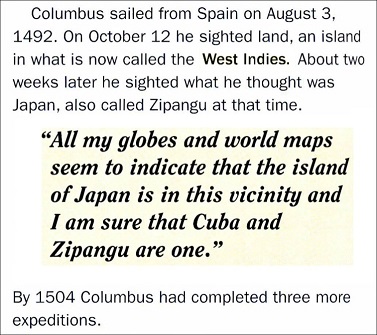
7 ⠀⠀,columbus sail$ f ,spa9 on ,augu/ #c1
8 #adib4 ,on ,octob] #ab he si<t$ l&1 an
9 isl& 9 :at is n[ call$ ! ^1,we/
10 ^1,9dies4 ,ab two weeks lat] he si<t$
11 :at he ?"\ 0 ,japan1 al call$ ,zipangu
12 at t "t4
13 ⠀⠀⠀⠀⠀⠀⠀⠀⠀⠀⠀⠀⠀⠀⠀⠀⠀⠀⠀⠀⠀⠀⠀⠀⠀⠀⠀⠀⠀⠀⠀⠀⠀⠀⠀⠀⠀⠀⠀⠀
14 ⠀⠀8,all my globes & _w maps seem to
15 ⠀⠀9dicate t ! isl& ( ,japan is 9 ?
16 ⠀⠀vic9;y & ,i am sure t ,cuba & ,zipangu
17 ⠀⠀>e "o40
18 ⠀⠀⠀⠀⠀⠀⠀⠀⠀⠀⠀⠀⠀⠀⠀⠀⠀⠀⠀⠀⠀⠀⠀⠀⠀⠀⠀⠀⠀⠀⠀⠀⠀⠀⠀⠀⠀⠀⠀⠀
19 ,by #aejd ,columbus _h complet$ ?ree m
20 exp$i;ns4
(Return to Text)
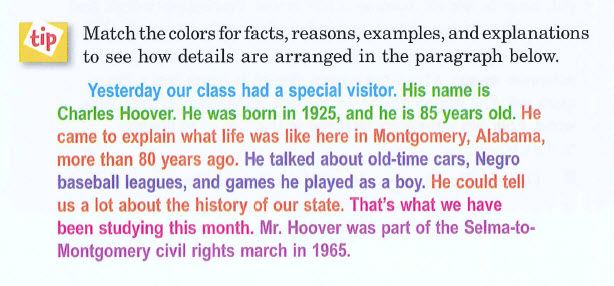
1 ⠀⠀⠀⠀⠀⠀`.<,symbols us$ 2l3 #,-
2 ⠀⠀⠀⠀⠀⠀⠀⠀⠀⠀⠀⠀⠀⠀⠀⠀⠀⠀⠀⠀⠀⠀⠀⠀⠀⠀⠀⠀⠀⠀⠀⠀⠀⠀⠀⠀⠀⠀⠀⠀
3 .=`#7 ,blue passage 9dicator
4 .=`#' ,blue t}m9ator
5 .=^#7 ,gre5 passage 9dicator
6 .=^#' ,gre5 t}m9ator
7 .=_#7 ,orange passage 9dicator
8 .=_#' ,orange t}m9ator
9 .="#7 ,p9k passage 9dicator
10 .="#' ,p9k t}m9ator
11 .=.#7 ,purple passage 9dicator
12 .=.#' ,purple t}m9ator
13 .=`7 ,violet passage 9dicator
14 .=`' ,violet t}m9ator`.>
15 ⠀⠀⠀⠀⠀⠀⠀⠀⠀⠀⠀⠀⠀⠀⠀⠀⠀⠀⠀⠀⠀⠀⠀⠀⠀⠀⠀⠀⠀⠀⠀⠀⠀⠀⠀⠀⠀⠀⠀⠀
16 ⠀⠀⠀⠀tip
17 ⠀⠀⠀⠀,mat* ! colors = facts1 r1sons1
18 ⠀⠀⠀⠀examples1 & explana;ns to see h[
19 ⠀⠀⠀⠀details >e >rang$ 9 ! p>agraph 2l4
20 ⠀⠀`#7,ye/]"d \r class _h a special
21 visitor4`#' ^#7,8 "n is ,*>les ,hoov]4
22 ,he 0 born 9 #aibe1 & he is #he ye>s
23 old4^#' _#7,he came to expla9 :at life 0
24 l "h 9 ,montgom]y1 ,alabama1 m ?an #hj
25 ye>s ago4_#' .#7,he talk$ ab #,-
(Return to Text)